
Let’s head to Belgium with the cramique, a raisin and pearl sugar brioche, perfect for breakfast or an afternoon treat. If you don’t know this Belgian specialty yet, now is the perfect time to prepare and enjoy it.
The cramique, or kramiek in Flemish, is a lightly sweetened brioche bread filled with raisins and also with pearl sugar (coarse sugar crystals) in some family traditions. It can be found in almost every bakery in Belgium and at Christmas markets, where it is a must-have during the holiday season much like German Stollen. The popularity of cramique reaches its peak during St. Nicholas’ Day and the Advent season. Enough to wait patiently for Christmas.
A similar recipe can be found in northern France. The cramique can be baked in a loaf pan or shaped into a round or elongated loaf. Before baking, it is brushed with milk or egg yolk to give it a beautiful golden color and shine. It is also often scored, like traditional breads.
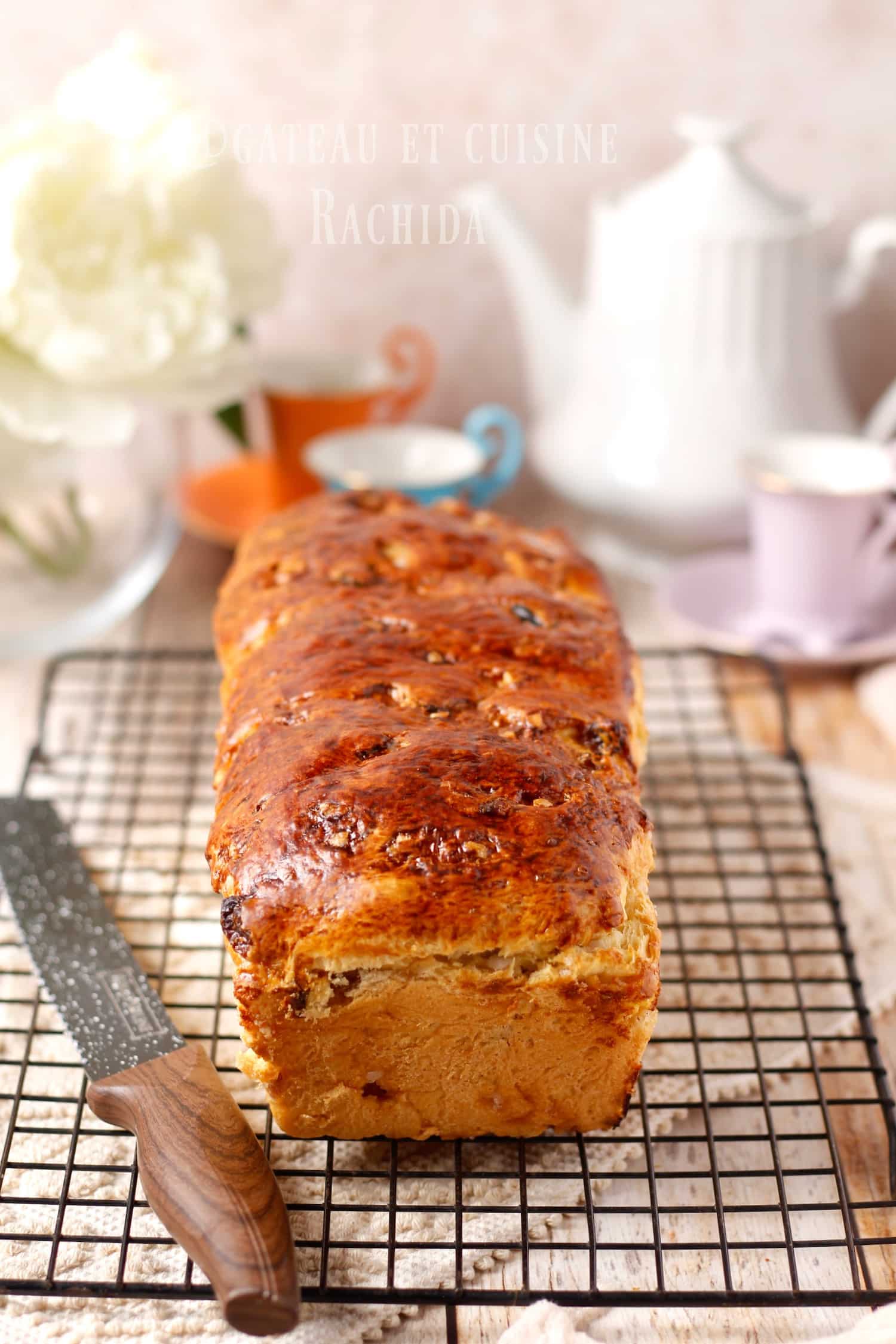
Table of Contents
Difference between cramique and craquelin
These are two traditional Belgian specialties that resemble each other closely, except for their filling. The cramique typically contains only raisins, while the craquelin (or krakeling in Dutch) is filled with just coarse pearl sugar.
However, many Belgian bakeries and families prepare cramique with both raisins and pearl sugar. In my opinion, this combination is perfect. The pearl sugar, which crunches under the tooth, adds a delicious touch to the cramique.
Tips for making the perfect cramique.
Depending on the method, some knead the dough for a long time like a brioche, while others mix the dough for just a few minutes without overworking it. Personally, I prefer to knead it well, and I get a cramique that is soft and airy without the crumb being stringy or elastic like a brioche. Don’t forget that cramique, like German Stollen, are not brioches.
As the flour absorption can vary, start by using only 3/4 of the milk, and once the mixer is running, add the rest gradually. This will avoid sticky dough.
Use fresh baker’s yeast for better results and flavor. If you don’t have any, you can use instant dry yeast, dividing the amount of fresh yeast by 2.5. You will need 10 g (0.35 oz). Dissolve the yeast in a little warm milk, but be careful, it must not be hot, as it would deactivate the yeast.
Leave the dough to rise. It should double in volume each time.
Rehydrate the raisins an hour beforehand, covering them with water. They will incorporate better into the dough.
If you choose, like I did, to use pearl sugar, opt for large-sized pearls, like those used for Liège waffles.
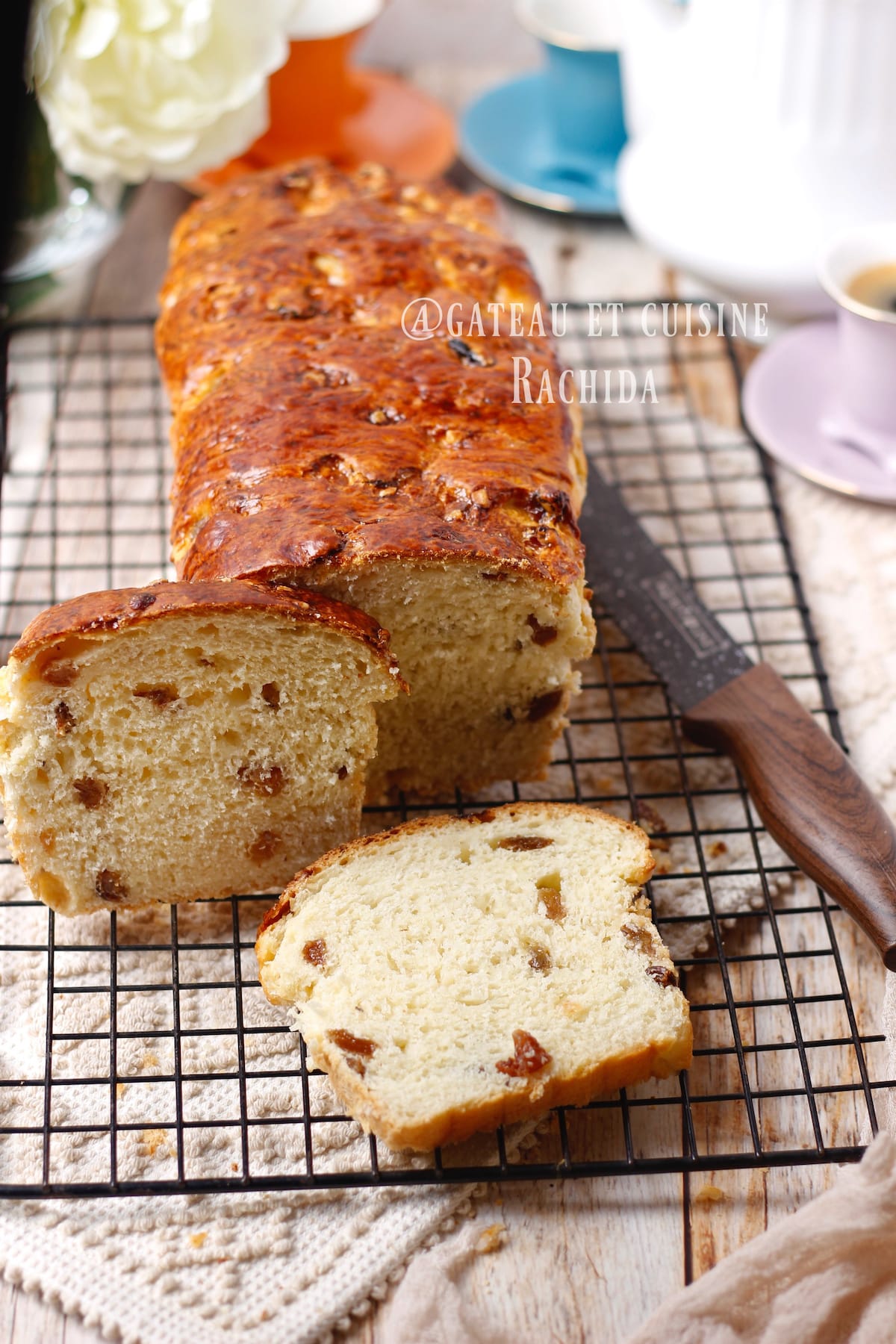
Ingredients:
NB: Find the printable recipe card at the end of the article.
For a loaf pan 30 cm x 11 cm x 7 cm in height (11.8 inches x 4.3 inches x 2.8 inches).
- 500 g (17.6 oz) flour
- 1 egg
- 50 g (1.8 oz) granulated sugar
- 1 level teaspoon fine salt
- 250 ml cold milk (8.5 oz)
- 100 g butter at room temperature (3.5 oz)
- 25 g (0.9 oz) of fresh baker’s yeast, preferably, or 10 g ( 0.35 oz) of instant dry yeast
- 130 g ( 4.6 oz) of raisins
- 70 g (2.5 oz) of pearl sugar (large grains, for Liège waffles). You can substitute this with raisins instead.
For the egg wash
1 egg yolk and 1 to 2 teaspoons milk
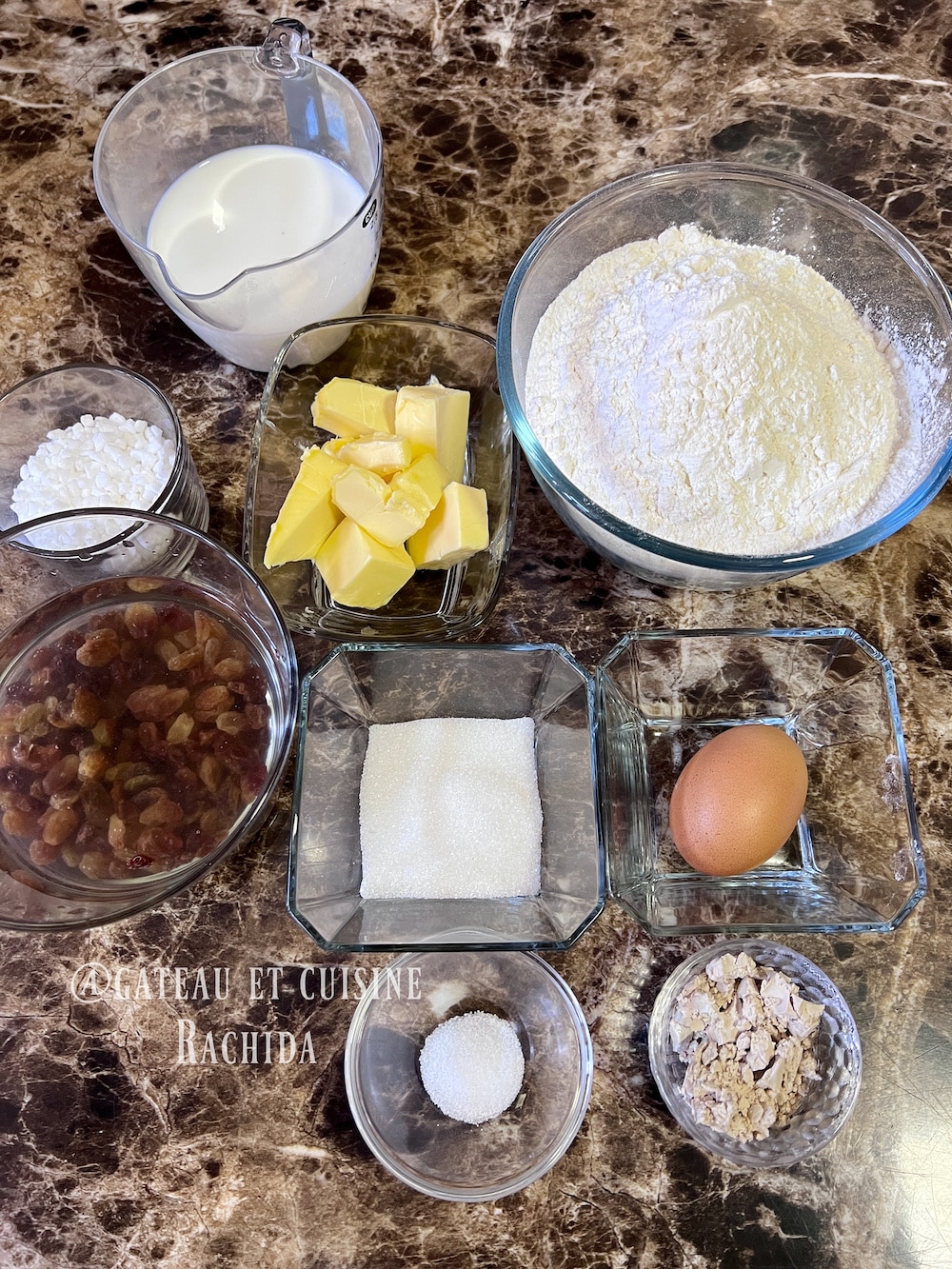
Preparation steps
1. Cover the raisins with water and let them swell during the dough rising time.
2. Warm a little milk, about 4 tablespoons, and pour it over the crumbled yeast along with 1 tablespoon of sugar taken from the 50 g (1.8 oz).
3. In the bowl of a stand mixer or in a large mixing bowl (if you knead by hand), add the salt, then the flour and sugar.
4. 4. Mix 3/4 of the milk with the egg, then pour it all over the flour along with the yeast.
5. Knead for 5 minutes on speed 2, gradually adding the rest of the milk to combine all the ingredients and form a dough.
6. Stop the mixer and let the dough rest for 5 minutes.
7. Then knead for 10 minutes, still on speed 2. The dough should be soft and wrap around the hook.
8. Cover the bowl with plastic wrap and then cover it with a towel. Let the dough rise until it doubles in size, for about 2 hours, more or less, away from drafts. If it’s cold, place the bowl in the oven preheated to 30°C (86°F) and then turn off the oven. The rising time may vary depending on the room temperature.
Note: To knead by hand, allow about 20 minutes. Stretch the dough on the work surface, lift it, and slap it against the surface. Fold it, then stretch it again and slap it. Repeat these actions until you have a smooth and soft dough.
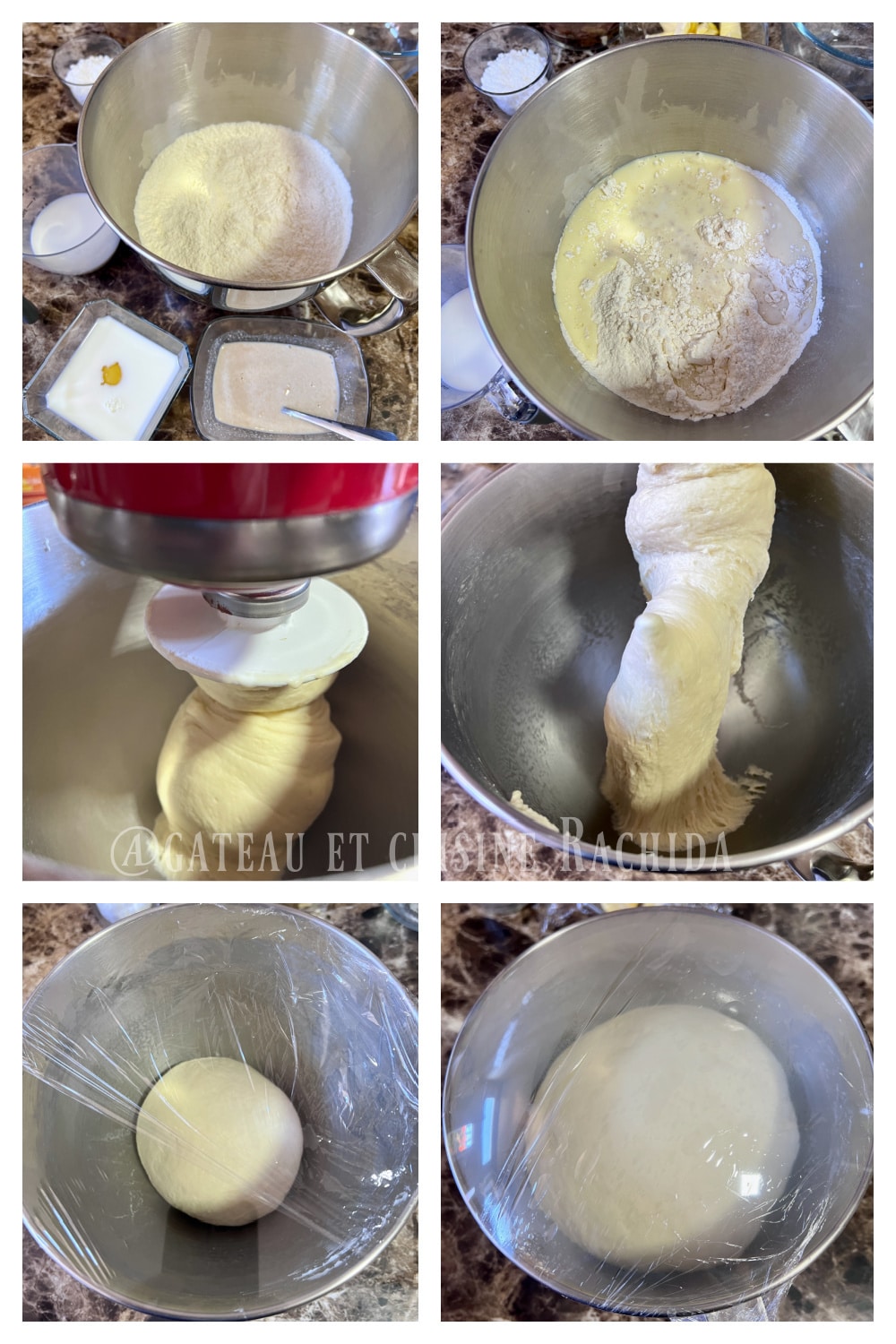 9. Once the dough has doubled in volume, gradually add the butter on speed 2. (I added it all at once, which I don’t usually do. It took longer for the butter to fully incorporate into the dough.)
9. Once the dough has doubled in volume, gradually add the butter on speed 2. (I added it all at once, which I don’t usually do. It took longer for the butter to fully incorporate into the dough.)
10. When the butter is fully incorporated and the dough is smooth, add the well-drained raisins. Run the mixer to evenly distribute the raisins throughout the dough. This step can also be done by hand if you prefer.
11. Turn the dough out onto the work surface, flatten it into a square, and then spread the pearl sugar over the surface. Fold the dough over itself, cut it in half, and stack the pieces on top of each other. Flatten the dough again and repeat the process until the pearl sugar is evenly distributed throughout the dough.
Note: I used this method, but you can also incorporate the raisins and pearl sugar directly into the mixer or entirely by hand.

12. Grease and flour the loaf pan, then remove any excess flour.
13. Dust the work surface with a little flour. Lightly flatten the dough into a rectangle, then fold both sides toward the center to form a long roll. Pinch the edges to seal the dough, then elongate the roll to the length of the pan.
14. Place the roll in the pan and flatten it evenly. If any raisins appear on the surface, gently press them into the dough to prevent them from burning during baking.
15. Cover the pan with a clean towel and let the dough rise for 45 minutes or more, until it doubles in size.

16. When the cramique dough has risen well, preheat the oven to 180°C (350°F).
17. Dilute the egg yolk with a little milk, then gently brush the top of the brioche with this mixture.
18. Bake for about 35 minutes, adjusting the baking time according to your oven, until the cramique is golden brown. If the brioche becomes too brown before the end of baking, cover the top with a sheet of aluminum foil to prevent it from burning.
19. Remove the cramique from the oven and let it cool for 5 minutes before unmolding it onto a wire rack. Allow to cool completely before slicing. This way, you will get nice slices.
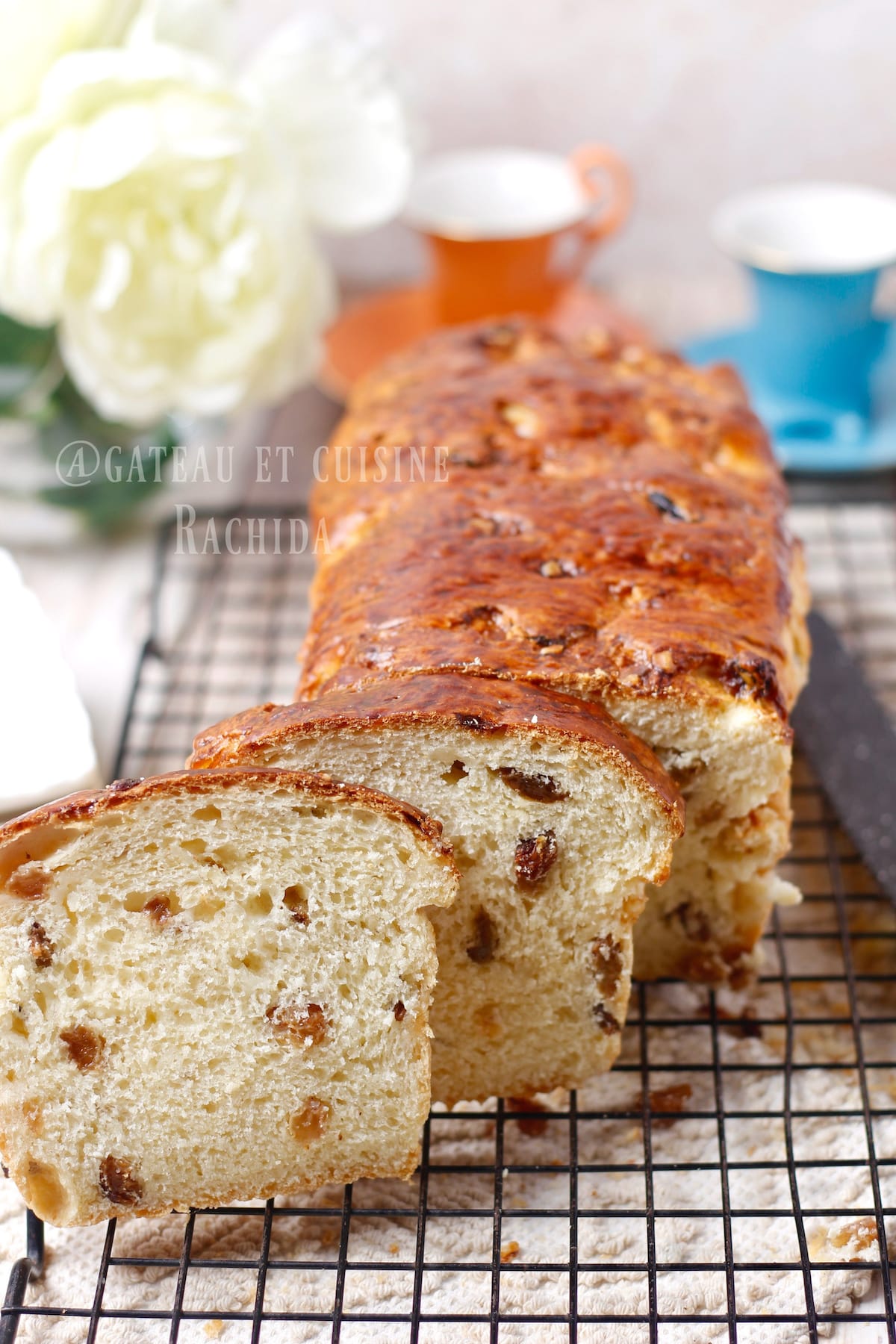
Tips of storage :
Cramique can be stored at room temperature for 2 to 3 days. Wrap it in aluminum foil, then place it in a Ziploc freezer bag or airtight box to keep it soft.
For longer storage, up to a week, place in the refrigerator. Before enjoying, slice the desired number of pieces and heat them for a few seconds in the microwave or in a preheated, then turned off oven to restore their softness.
Cramique can also be frozen, whole or sliced, so you only get out what you need. Wrap carefully in aluminum foil, then place in a freezer bag. It can be kept for up to 3 months. Let it defrost at room temperature before reheating and enjoying.
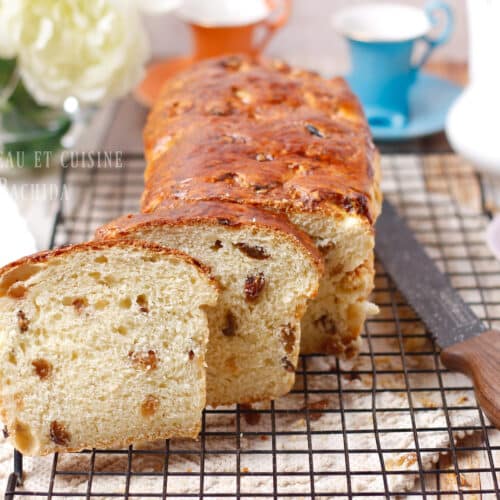
Belgian Cramique, Raisin Brioche Bread
INGREDIENTS
- 500 g all-purpose flour 17.6 oz
- 1 egg
- 50 g granulated sugar 1.8 oz
- 1 level teaspoon fine salt
- 250 ml milk 8.5 oz
- 100 g butter at room temperature 3.5 oz
- 25 g fresh baker's yeast, preferably, or 10 g instant dry yeast 0.9 oz fresh baker's yeast or 0.35 oz instant dry yeast
- 130 g raisins 4.6 oz
- 70 g pearl sugar (large grains, for Liège waffles). 2.5 oz You can substitute it with raisins instead.
For the egg wash
- 1 egg yolk and 1 to 2 teaspoons milk
PREPARATION
- Cover the raisins with water and let them swell during the dough rising time.
- Warm a little milk, about 4 tablespoons, and pour it over the crumbled yeast along with 1 tablespoon of sugar taken from the 50 g (1.8 oz).
- In the bowl of a stand mixer or in a large mixing bowl (if you knead by hand), add the salt, then the flour and sugar.
- Mix 3/4 of the milk with the egg, then pour it all over the flour along with the yeast.
- Knead for 5 minutes on speed 2, gradually adding the rest of the milk to combine all the ingredients and form a dough.
- Stop the mixer and let the dough rest for 5 minutes.
- Then knead for 10 minutes, still on speed 2. The dough should be soft and wrap around the hook.
- Cover the bowl with plastic wrap and then cover it with a towel. Let the dough rise until it doubles in size, for about 2 hours, more or less, away from drafts. If it's cold, place the bowl in the oven preheated to 30°C (86°F) and then turn off the oven. The rising time may vary depending on the room temperature.
- Note: To knead by hand, allow about 20 minutes. Stretch the dough on the work surface, lift it, and slap it against the surface. Fold it, then stretch it again and slap it. Repeat these actions until you have a smooth and soft dough.
- Once the dough has doubled in volume, gradually add the butter on speed 2. (I added it all at once, which I don't usually do. It took longer for the butter to fully incorporate into the dough.)
- When the butter is fully incorporated and the dough is smooth, add the well-drained raisins. Run the mixer to evenly distribute the raisins throughout the dough. This step can also be done by hand if you prefer.
- Turn the dough out onto the work surface, flatten it into a square, and then spread the pearl sugar over the surface. Fold the dough over itself, cut it in half, and stack the pieces on top of each other. Flatten the dough again and repeat the process until the pearl sugar is evenly distributed throughout the dough.
- Note: I used this method, but you can also incorporate the raisins and pearl sugar directly into the mixer or entirely by hand.
- Grease and flour the loaf pan, then remove any excess flour.
- Dust the work surface with a little flour. Lightly flatten the dough into a rectangle, then fold both sides toward the center to form a long roll. Pinch the edges to seal the dough, then elongate the roll to the length of the pan.
- Place the roll in the pan and flatten it evenly. If any raisins appear on the surface, gently press them into the dough to prevent them from burning during baking.
- Cover the pan with a clean towel and let the dough rise for 45 minutes or more, until it doubles in size.
- When the cramique dough has risen well, preheat the oven to 180°C (350°F).
- Dilute the egg yolk with a little milk, then gently brush the top of the brioche with this mixture.
- Bake for about 35 minutes, adjusting the baking time according to your oven, until the cramique is golden brown. If the brioche becomes too brown before the end of baking, cover the top with a sheet of aluminum foil to prevent it from burning.
- Remove the cramique from the oven and let it cool for 5 minutes before unmolding it onto a wire rack. Allow to cool completely before slicing. This way, you will get nice slices.
Thank you for visiting my blog and for your comments.
You can also follow me on my youtube channel

2 comments
Je vais tester votre recette. Surtout votre façon de procéder par étapes car des cramiques j’en ai déjà faits et refaits mais votre mie me plaît vraiment bien. J’espère arriver au même résultat. Je vous donne 5 étoiles par avance. :-)
Bonjour , désolée je n’avais pas vu votre message. J’espère que vous l’avez testé et qu’il vous a plu. Mercii pour votre notation, c’est très gentil.